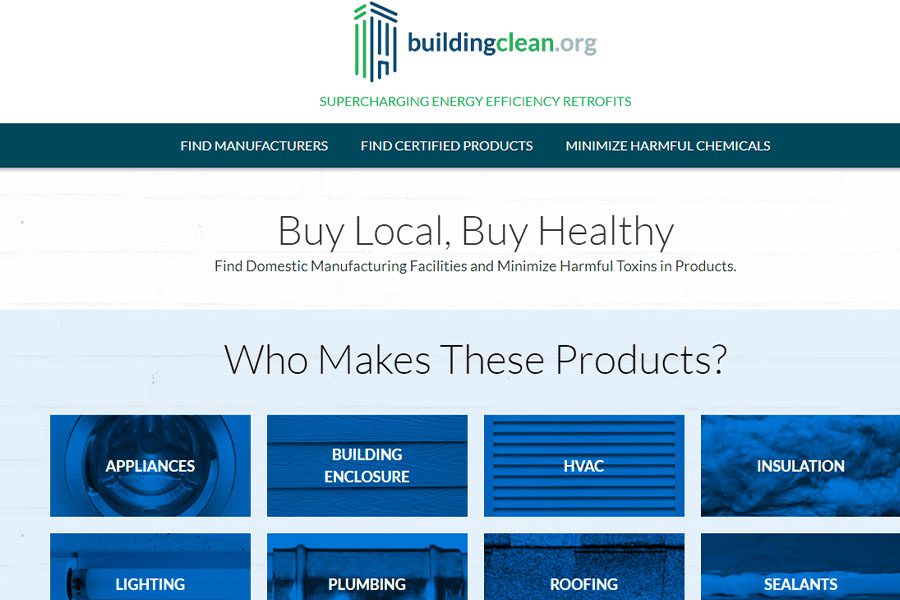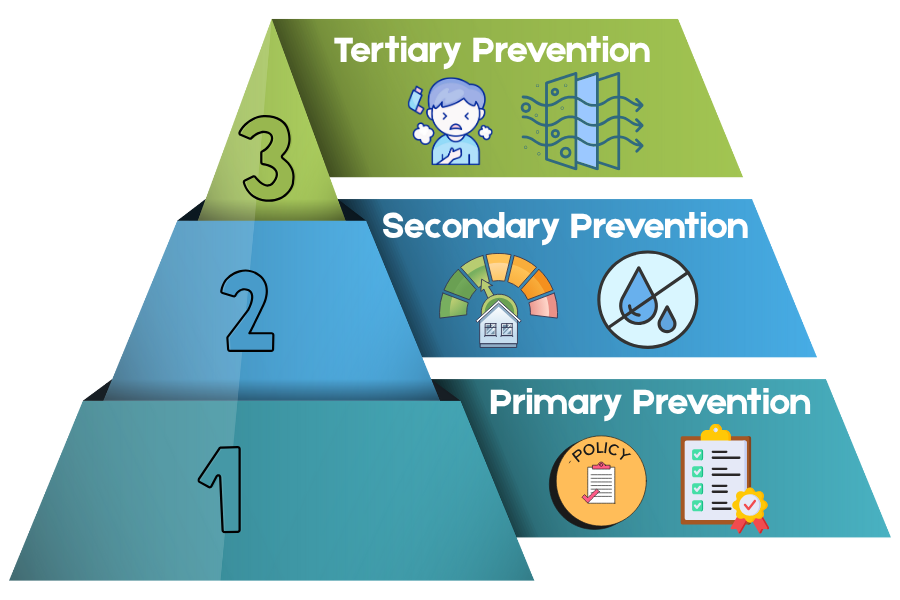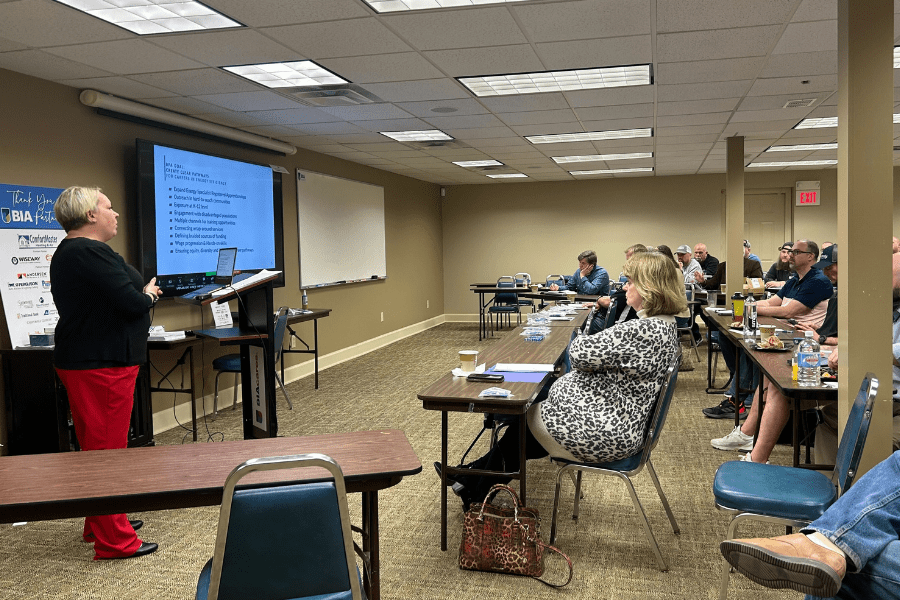Oct 12, 2021
Builders Share Their Thoughts on Health and Hazards in Building Products
Building Clean project aims to promote the use of efficient and healthier building products in residential construction, expand manufacturing jobs and provide educational materials to builders to take a health-centered approach to understanding building products, including identifying and purchasing healthier options. A recent survey showed that there is a high level of interest in understanding hazardous chemicals in building products, identifying healthier alternatives, and the cost and performance of these materials.
By: Dana Saylor

The Building Clean project is interested in shaping research and educational materials that can help builders take a health-centered approach to understanding building products, including what chemicals of concern are in building products, and how to identify and purchase healthier options. A part of that goal has been to understand what education and training is currently available for building professionals on toxic materials in building products, their impacts on residents and installers, and healthier alternatives. By connecting with organizations who provide training to builders, we’re developing a better understanding of the information being taught and where discussions on these issues could be expanded.
However, within this effort, it’s also important to understand what issues surrounding hazardous chemicals in building products construction professionals consider to be of greatest interest and concern. Building Clean took a step towards doing that in our recent “Healthier Building Products and Practices in Construction” survey, which drew valuable feedback from respondents and is highlighted in the summary below. We welcome the engagement of BPA members who would like to add to this discussion or help provide us with additional direction for our research and educational materials.
Building Clean is a project of the BlueGreen Alliance Foundation, a 501c3 organization. We work to promote the use of efficient and healthier building products in residential construction and expand manufacturing jobs by helping builders find cost-competitive products made in the U.S. The centerpiece of our project is our BuildingClean.org website, which includes nearly 5,500 U.S. manufacturing locations in 10 different energy and water efficient building product market sectors. The site also contains a way to search for building products that are third-party certified as healthier for occupants and installers and includes a wealth of information on chemicals in building products, potential health hazards, and how to avoid them.
“Healthier Building Products and Practices in Construction” Survey Summary
Who Participated
Respondents came from a variety of backgrounds ranging from architects to materials specifiers to carpenters, and almost all had a focus on green building and energy efficiency. 60% of respondents work in single family, 26% in multifamily, and 43% in affordable housing. Several eastern and central states are represented here, including Washington D.C.
Of those who are seeking green building certifications, Energy Star was the most reported, followed by LEED, LBC, NGBS, and Earth Craft. Others mentioned were EPA Indoor airPLUS, Zero Energy Ready, WaterSense, and WELL.
All respondents were curious and concerned about hazardous chemicals in building products, with about a third stating they have received education or attended webinars related to this topic. Those who achieved professional certification hold HERS, LEED AP+, LFA, WELL, and LEED Green Associate credentials. Nearly half of the respondents have used online sources or databases to find healthier materials, including Pharos, HomeFree, Mindful Materials, Green Building Advisor, BuildingClean, SF Tool, Red2Green, UL Product Lens, and 4specs.com.
Topics of Interest
Overall, there was a high level of interest in all of the topics we listed, including which building products are most harmful to health, carry third-party certifications and ingredient transparencies, and which products/brands are healthier alternatives. There is also interest in getting a general overview of chemicals, but keeping it framed to building products and brands.
Concerns about Products

Respondents were concerned about specific products, including PVC, resins, adhesives, caulks, paints, flooring, particle board countertops, treated lumber, glues in engineered products, foam board insulation, spray foam, and fiberglass. Other concerns mentioned include harmful dust from materials such as drywall, concrete, treated wood, and asbestos tile—issues that adversely impact workers and installers as they are typically only present during construction. VOCs were the only specific chemical or chemical group mentioned.
Cost was the most reported concern. One piece of insight provided was that “even clients who are aware of the concerns of healthier materials are concerned about the cost, ‘It would be great to have cost information to share to show people that the “mark up” isn’t always there.’” Although more needs to be done, Building Clean has done some research to show that efficient, healthier and U.S.-made building products can be cost-competitive with their alternatives, which we highlight in the following “Buy Local, Buy Healthy and Save!” brochure and “Appliance Cost and Country of Assembly Survey.”
Performance was also mentioned by one participant as a concern, as well as the legitimacy of classifying certain products as “healthier” indicating they “would like to see certifications that truly meet green building standards.”
Buying Healthier Products
Of those who are in the position to buy healthier products, a majority indicated that they do so on a regular basis or sometimes. A few respondents indicated that they were unsure which products are healthier as well as where to purchase healthier materials. Accessibility and affordability were mentioned as deterrents for not purchasing them.
For builders of market-rate housing, when asked if the use of healthier building practices and materials has given them an edge in attracting business, about half of the respondents who answered this question said it has. For some, it’s less clear as they have only just begun to market these ideas to clients and have yet to understand if it will lead to new business.
Conclusions

Overall, respondents agreed that more information and education are needed across the construction industry to understand hazardous chemicals in building products and identify healthier options. Pursuing or mandating green building certifications in construction projects is one way to increase the knowledge and use of healthier products among builders, but how do we get beyond that to where healthier products are the first choice or the only option? Outside the pursuit of green building certifications, how do we ensure that the products architects specify for a project are those being used? Additionally, including homeowners in the conversation is important and educating them on potential hazards in building materials is also needed.
There is also the issue of classifying certain products as “healthier.” We use that term to simplify communications about products that are third-party certified to be free from hazardous chemicals known to have an impact on human health. However, some certified products still contain chemicals that may be harmful to human health, so the question remains as to whether those products should be labeled as healthier vs. less toxic. One respondent said that some educational presentations on healthier products are hosted by building materials suppliers, which made them skeptical.
Finally, there is the issue of cost. Building Clean’s work with affordable housing builders to source cost-competitive products that are efficient, healthier, and U.S.-made is helping to address this concern, but it’s on a small scale. Upcoming product consultation work with additional partners will hopefully help us continue to show that products with these qualities aren’t always more expensive. However, financial costs should also be balanced against the cost of using products that are less efficient, contain hazardous chemicals, and are manufactured far away.





